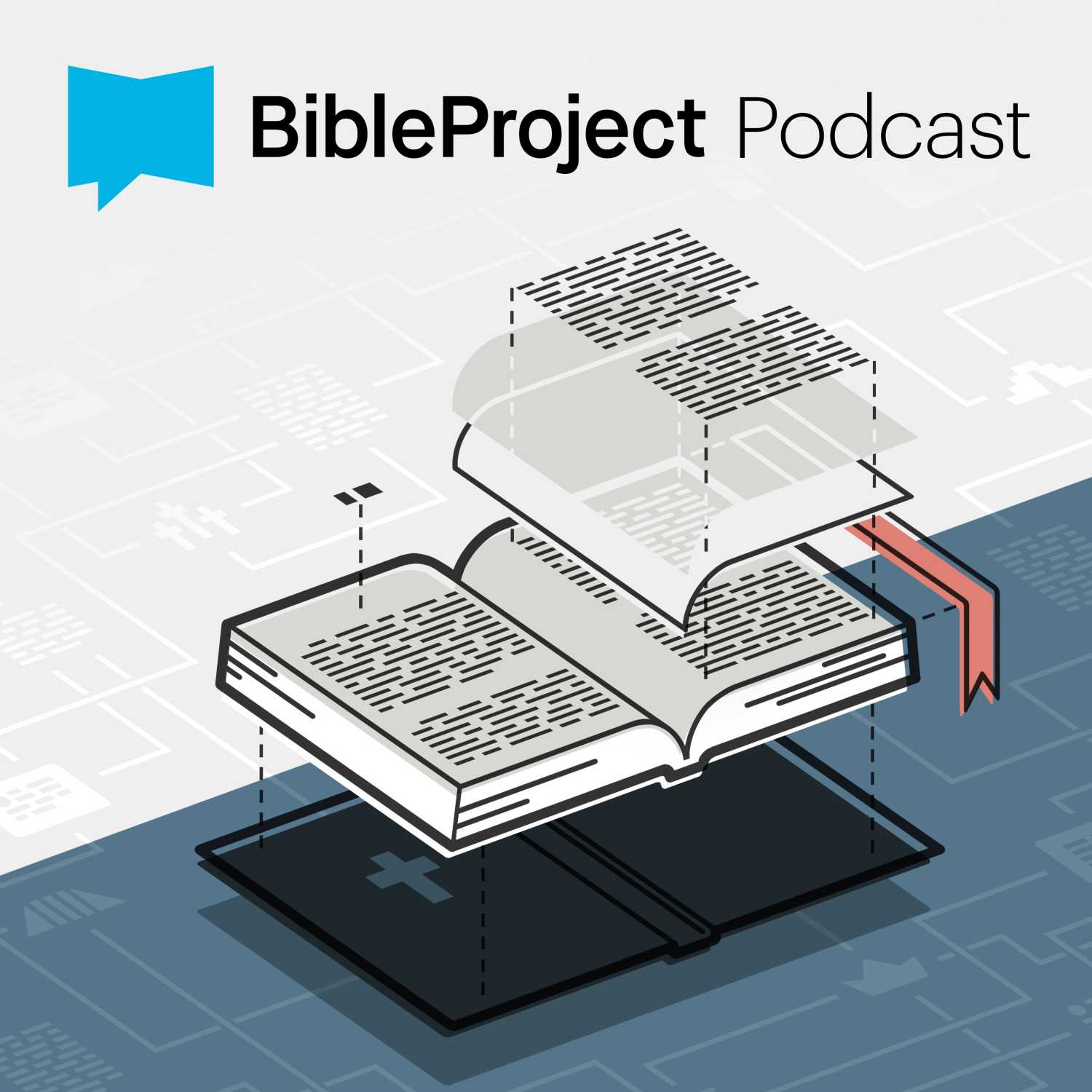
Bible Basics
Welcome! The Bible Basics Podcast is designed to make the Bible approachable and accessible for all, particularly those who are new to the faith or curious about the Bible. Each episode focuses on a specific topic, breaking it down into bite-sized chunks and offering foundational knowledge about the Bible's structure, types, writing, and storyline. The ultimate goal is to increase listeners' comfort level with the Bible and deepen their relationship with God through reading His Word.
Click this link to send us a message:
https://www.buzzsprout.com/twilio/text_messages/2180587/open_sms
Bible Basics
John, Part 2 – The God Who Says “I Am”
We explore the seven “I Am” statements in John to show how Jesus reveals his identity and meets our deepest needs with clarity, care, and power. From hunger to hope, darkness to direction, despair to resurrection, each image invites a personal response.
• the divine echo of “I Am” from Exodus
• bread of life and the end of restless hunger
• light of the world and guidance through confusion
• the gate as safety and access to God
• the good shepherd who knows and lays down his life
• resurrection and the life amid grief and fear
• way, truth, and life as a relational path
• true vine and the call to abide for lasting fruit
• practical reflection on which truth you need now
If this episode encouraged you, share with someone who might need that same reminder
RELATED EPISODES:
John, Part 1 - The Word Who Came Near
RESOURCES:
- Got Questions Ministries. (2002–2013). Got Questions? Bible questions answered. Logos Bible Software.
- Keown, M. J. (2018). Discovering the New Testament: An introduction to its background, theology, and themes: The Gospels & Acts (Vol. 1). Lexham Press.
- MacArthur, J. (Ed.). (2013). The MacArthur Study Bible (NIV). Thomas Nelson.
We'd love to hear from you - Click Here to Text Us a Message.
Have questions about what it means to follow Jesus?
Whether you’re just starting your faith journey or exploring what the Bible teaches, we’d love to walk with you. God’s invitation is real, personal, and full of grace.
💬 Reach out to Jacqui at info@bible-basics.org
📖 Talk to a trusted Christian in your life
🏠 Or visit a Bible-believing church near you
You are not alone. God’s Word is alive, and He is still drawing people to Himself today. Don’t hesitate to take the next step.
Thank you for tuning in!
Bible Basics is now streaming in video on Youtube. Please subscribe now!
Feel free to contact us at info@bible-basics.org. We would love to hear from you!
Note: All scripture references are from the NIV translation unless otherwise indicated.
Greetings, listeners. You've probably heard the saying, it's not what you know, but who you know. In life and work, that may be true, but in faith, it's everything. Today we're opening the Gospel of John, a book written so we can truly know Jesus. The Gospel of John isn't about memorizing facts about God. It's about knowing a person, Jesus Christ. And in the section we're exploring, often called the Seven I Am statements, Jesus tells us exactly who he is. Well, welcome everyone. I'm Jacqui Adewole, and this is the Bible Basics Podcast, where every two weeks we break down the basics of the Bible into understandable, bite-sized chunks. Last time we looked at the big picture of John's Gospel and saw its central theme. Jesus is the word who became flesh so we could know God. Today, in part two, we hear Jesus speak for himself. Throughout John's Gospel, he reveals who he is through simple, everyday images, bread, light, a shepherd, a vine. Each one points to something deeper about his mission and his heart. Now, before we dive in, there's something important you need to know about these I am statements. When Jesus says, I am, he isn't making a casual point. Those two words echo all the way back to Moses at the burning bush in Exodus 3, where God revealed his name as I am who I am. It was God's way of saying, I am self-existent, I am complete, I am present. So every time Jesus begins with I am, he is identifying himself with that same eternal God. The God who spoke to Moses is now standing among his people. Let's walk through all those seven statements and listen to what each one teaches us. First, I am the bread of life. That's in John 6, verse 35. Jesus speaks these words right after one of his best known miracles, feeding 5,000 people with just five loaves and two fish. The crowd ate until they were satisfied, and the next day they came looking for him again. But Jesus could see their real hunger went much deeper than food. He told them, I am the bread of life. Whoever comes to me will never go hungry, and whoever believes in me will never be thirsty. Bread was the most basic food in that culture, part of every meal, a necessity for survival. So everyone listening understood the image immediately. Jesus was claiming to be what sustains life spiritually, the one who truly satisfies the human heart. Just as bread gives strength to our bodies, Jesus gives life to our souls. The crowd wanted another meal. Jesus offered something better. Himself. He invited them to stop chasing what never lasts and find satisfaction in him alone. Here's the thing. We still do this. We fill our lives with things we think will satisfy. You know, success, relationships, approval, comfort, but the hunger always returns. Jesus promises what no one else can: a life that never runs out, a satisfaction that never fades. I am the bread of life means I am enough. I can fill every empty place. I am the light of the world. Chapter 8, verse 12. This second I am statement comes a little later in John's Gospel. Picture this: it's the festival of tabernacles, and massive lamps are blazing throughout the temple courts. Flames so bright they remind everyone watching of that pillar of fire that led Israel through the wilderness centuries before. We see that back in Exodus chapter 13. Right there, surrounded by firelight, Jesus makes his claim. Whoever follows me will never walk in darkness, but will have the light of life. Bold words. Throughout scripture, light always points to the same things: God's truth, his guidance, clarity when we're confused, and hope when things feel dark. The psalmist prayed, send out your light and your truth, let them lead me. That's chapter 43, verse 3 of Psalms. John wrote simply, God is light. That's in 1 John 1:5. When we're lost, God's word becomes a lamp to my feet and a light to my path. That's Psalm chapter 119, verse 105. From the very first words, let there be light, Genesis 1.3. To Jesus standing in the temple that night, God has been cutting through the darkness. So what is Jesus actually claiming when he says, I am the light of the world? Not that he's a teacher with a flashlight, not that he's pointing toward the light. Jesus later says, Whoever has seen me has seen the Father. That's chapter 14, verse 9. He embodies everything true and trustworthy about God, the exact imprint of his nature, the visible image of the invisible God. He doesn't just illuminate the path, he is the path. And he'll say later, I am the way, the truth, and life. If you've ever felt like you're stumbling in the dark, unsure which way to turn or what to believe, this is the invitation. Follow him, and you'll find light no shadow can overcome. In John 10, Jesus uses two images that work together: a gate and a shepherd. Everyone listening would have recognized those scenes from daily life. Shepherds spent their days leading sheep through rocky hills and their nights watching over them in simple stone pens. These pens had only one narrow opening, and at night the shepherd himself would lie down across that gap. His own body became the gate. Sheep couldn't wander out, predators couldn't sneak in. Everything passed through him. So when Jesus says, I am the gate for the sheep, whoever enters through me will be saved. They will come in and go out and find pasture. People understood exactly what he meant. Gates do two things. They protect and they provide access. Jesus guards what belongs to him and opens the way for us to know the Father and receive his promised salvation. Then he takes the image further. I am the good shepherd. The good shepherd lays down his life for the sheep. In the Old Testament, God often called himself a shepherd, one who guides, protects, and provides. Psalm 23 begins with those famous words, The Lord is my shepherd, I shall not want. Through the prophet Ezekiel, God promised that when human leaders failed, he himself would come to rescue and tend his flock. That's in Ezekiel chapter 34, verses 11 through 16. Jesus is proclaiming that he fulfills that promise. That's exactly what Jesus would do at the cross. The shepherd laying himself down to save his flock. God himself had come to do what no human shepherd could do: rescue his people from sin and death. For us today, these words remind us we're not nameless or forgotten. We're known, loved, and protected by a shepherd who never leaves his own. He's both the gate that welcomes us into God's care and the shepherd who walks beside us every step of the way. This statement comes at one of the most heartbreaking moments in John's gospel. Jesus' close friend Lazarus has died. By the time Jesus arrives, Lazarus has been in the tomb for four days. His sister Martha runs out to meet Jesus, her heart full of grief and confusion. She says, Lord, if you had been there, my brother would not have died. Jesus looks at her and answers with words that still change lives today. I am the resurrection and the life. The one who believes in me will live, even though they die. And whoever lives by believing in me will never die. At first, Martha thinks he's talking about the resurrection at the end of time, something she already believed. But Jesus is telling her something deeper. Resurrection isn't just an event in the future, it's a person standing right in front of her. By calling himself the resurrection and the life, Jesus claims authority over life and death itself. He doesn't simply promise life after death. He is life. And then he proves it. By standing outside the tomb, he calls out, Lazarus, come out. And Lazarus walks out alive. Through this miracle, John shows us both Jesus' deep humanity and his full divinity. He weeps with the family, feeling their pain. And he commands death itself to release its hold. It's a glimpse of what he would soon do on the cross, defeating sin and death once and for all, so we can share his life. So for anyone facing loss or fear, these words offer hope that doesn't fade. Jesus isn't only the one who brings life back, he is life itself, and he offers that life to everyone who believes in him. I am the way, the truth, and the life. Chapter 14, verse 6. It's the night before Jesus goes to the cross. He's gathered with his disciples in an upper room for what we call the Last Supper. The mood is heavy. Jesus has told them he's leaving, and they don't understand what that means. Thomas finally asks what everyone's thinking, Lord, we don't know where you're going, so how can we know the way? Jesus answers, I am the way and the truth and the life. No one comes to the Father except through me. Those are some of the most important words in all of Scripture. In the Old Testament, the way often meant the path of following God's commands. Here, Jesus declares he is that way. He's not just pointing toward God, he's the living path that leads us to the Father. When he says he's the truth, he's claiming to embody everything real and trustworthy about God. To know Jesus is to know what God is like. And when he says he's the life, he's reminding us that real life, the kind that doesn't fade, is found only in relationship with him. In a world filled with voices claiming to have the answers, Jesus offers something beautifully simple and deeply personal. Himself. He doesn't give us a set of directions, he gives us a relationship. I am the way, the truth, and the life is Jesus assuring his disciples and us that we don't have to find our way to God on our own. He's already made the way, and he invites us to walk it with him. I am the true vine, chapter 15, verse 1. Now, Jesus and his disciples have just left the upper room. They're walking toward the garden where he'll soon be arrested. It's late at night, and they're likely passing through vineyards on the hillside. Using what's right in front of them, Jesus gives his final I am statement. I am the true vine, and my father is the gardener. Remain in me as I also remain in you. No branch can bear fruit by itself, it must remain in the vine. In the Old Testament, Israel was often compared to a vine planted by God, meant to bear good fruit, but that vine failed to produce what God desired. When Jesus calls himself the true vine, he's declaring that he fulfills what Israel could not. He's the faithful source of life and fruitfulness. The picture is simple, yet powerful. The vine sends life into every branch. If a branch breaks away, it dries out. But if it stays connected, it grows and bears fruit. Jesus is saying, Stay close to me, draw your strength from me. The word he uses remain or abide means to live in steady, ongoing connection with him. It's more than a moment of faith, it's a daily relationship of trust, prayer, and obedience. Just as a branch can't grow or bear fruit apart from the vine, we can't produce love, joy, peace, or lasting change apart from Jesus. He asks us to stay connected and the fruit will come. Through this final image, Jesus reminds his followers that real life flows only from him. Apart from him, we can do nothing. Each of these seven I am statements show us something about who Jesus is and what he offers us today. He's the bread that satisfies our hunger, the light that breaks through the darkness, the shepherd who knows our name, the life that never ends. These aren't just words on a page, they're invitations for us right now. So ask yourself this week, which of these truths do you need most? His light, his peace, his presence, the same voice that said, I am, still speaks today, reminding us that God is near and he's enough for every one of our needs. Thank you so much for tuning in. If this episode encouraged you, share with someone who might need that same reminder. Next time, we'll see how the words of Jesus and his works come together as John shows us the signs and miracles that invite belief. Until then, keep reading, keep seeking, and keep growing in your faith.
Podcasts we love
Check out these other fine podcasts recommended by us, not an algorithm.

Is Your Way In Your Way?
Cassandra Crawley MayoDisciple Dojo
JM Smith
Everything Everywhere Daily
Gary Arndt
Grammar Girl Quick and Dirty Tips for Better Writing
QuickAndDirtyTips.com